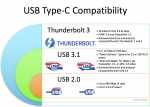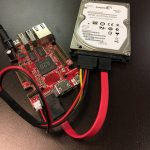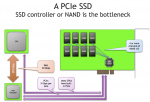Did you buy the new MacBook or MacBook Pro? Maybe the Google Pixel? You’re about to enter a world of confusion thanks to those new “USB-C” ports. See, that simple-looking port hides a world of complexity, and the (thankful) backward-compatibility uses different kinds of cables for different tasks. Shoppers have to be very careful to buy exactly the right cable for their devices!
PCI Express
Here’s Something Your Raspberry Pi Can’t Do: Gigabit Ethernet and SATA in the Olimex A20-OLinuXIno-LIME2
I’ve really enjoyed experimenting with the Raspberry Pi, and have even deployed a few as UNIX servers in my home and office network. The quad-core performance of the latest Pi models is awesome, but serious I/O limitations remain. With just one USB 2.0 interface shared for all network and storage operations, you aren’t going to […]
Apple Brings PCIe SSD To The Masses In The New MacBook Air
Apple’s brand-new MacBook Air might not look much from the outside, but a revolution lurks under the hood: This is the first mainstream computer to eschew SATA in favor of PCIe SSD! Long heralded in workstations and servers, PCIe SSD brings massive potential for storage performance.
Why Are PCIe SSDs So Fast?
The world of storage can be confusing, with obscure terms hiding massive differences in technology and performance. Such is the case for the latest PCI express SSDs: They are much faster than traditional SAS or SATA SSDs, but many aren’t sure exactly why. In this article, I will try to explain the real difference.
Fusion-io Hits the Mass Market with the Affordable ioFX Card
The ioFX was the highlight of NAB Show 2012 to me. Bringing massive performance to the masses, the ioFX continues Fusion-io’s tactic of shaking up the industry. And since it uses the same ioMemory architecture and drivers as the flagship ioDrive line, I expect Fusion-io will have difficulty keeping up with demand.




